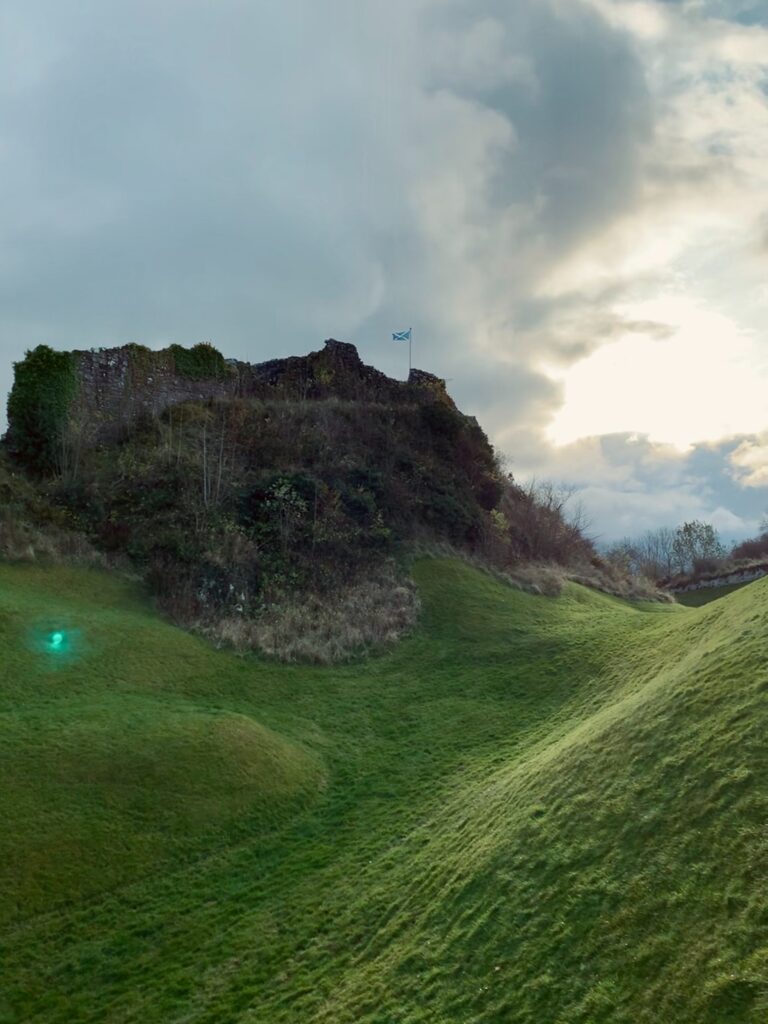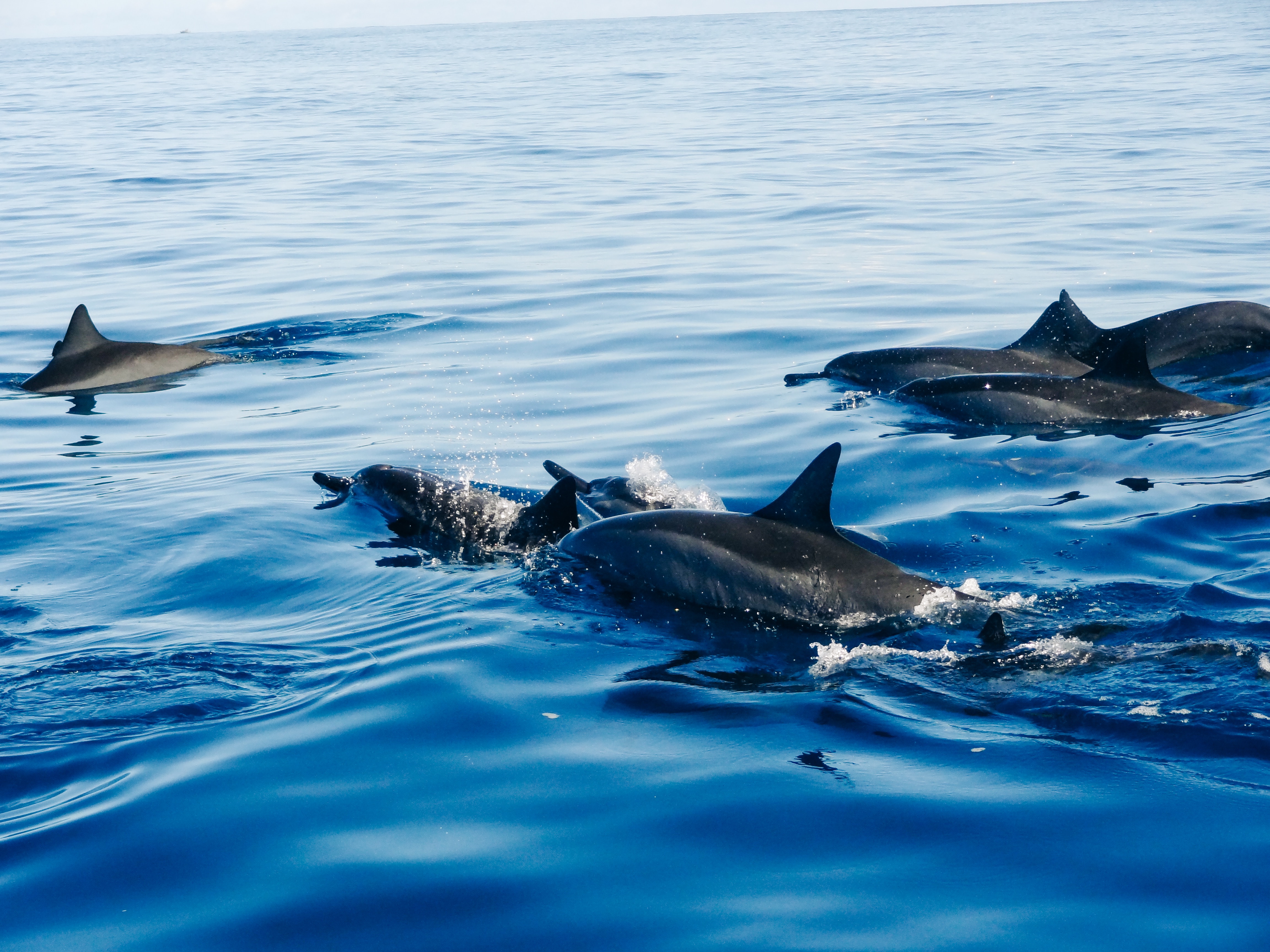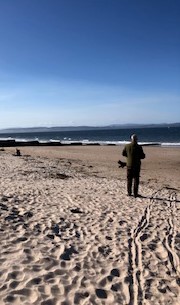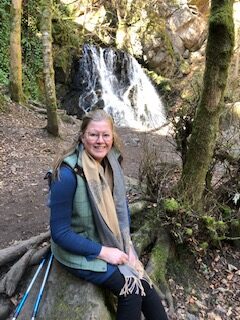When I was thirteen, my family moved to Eastbourne. I felt like Charlie Bucket unwrapping his chocolate bar to reveal the golden ticket. Could it be true that I was actually coming to live in a resort that I had once visited on holiday? My life would be a permanent vacation!

Of course, it was not exactly that, but it was an amazing place to grow up. My friend and I would venture into the sea and exalt at being tumbled by the freezing waves; I would go on romantic walks along the proms lit by pearl necklaces of light; and weekends often involved hikes high on the cliffs and facing down the unrelenting wind.
I grew up, moved away and across the world, but when it came to having my own children, like the salmon, I swam back here. If I could raise my children in a place with acres of wilderness and the sea minutes away, what more could they ask for?
Sea bathing
Though sea bathing, as a health cure, began as early as the 17th century, it wasn’t until the late 18th that things really took off. And when the railways arrived, a trip to the seaside was available and affordable to almost everyone. There is a lovely article about the Victorians and the seaside here, which you might enjoy: https://www.ironbridge.org.uk/learn/museum-collections/stories-from-the-collections/victorian-seaside/
But I digress.
One of the great joys of living so close to the sea is that, on a fine day, I can be there in minutes. If my husband is home, the weather fine and the sea moderately calm, we might attempt a swim. (I should add that my husband swims and surfs in all weathers. I, however, am a little more delicate!) Perfect conditions collided on Tuesday and my first swim of the year achieved.


Not quite as elegant, but I think my costume was more practical (I did take my shorts off!)
Swimming for health
It is rather curious, is it not, how circular history is? Sea swimming was promoted for health centuries ago, then it became a recreation and now, once again, is being seen for its significant healing properties thanks to Wim Hof et al. Since I have written about the benefits of sea/wild swimming, I shan’t go into detail again, but be assured that a dip in chilly and potentially dangerous waters creates resilience in a way that few other experiences can.
Health aside, it is simply exhilarating. One is challenged by the temperature of the sea (cold to freezing), the power of the tides and the unpredictable assault of the waves. It is relatively safe, yet we get all the thrill of the extreme athlete!
There are those who enjoy sea swimming all year round, but I am not (not yet at least) on of them.
A place for all seasons


But the coast offers its treasures no matter what the time of year. Those of us who live here often confess to enjoying the sea most during the winter months. The sea becomes a grey behemoth spitting and snarling at the water’s edge. And when it gets really angry, great sponges of seafoam and pebbles are tossed onto the mainland.
The flora of the coast is more subtle and sparse than that on more fertile ground, but even the chalkland can put on an eye-catching display. There are cowslips and wild thyme and even orchids to be found. On the pebbles, I’ve spotted wild geraniums, sea kale and even poppies.
Within the rockpools are whole worlds of creatures and on land rare butterflies and beetles. The coast does not give up its secrets easily, but give it a little attention and you will be surprised and delighted with what you find.
A natural anti-depressant
At a time when anxiety and depression is spiralling out of control, I really wish that doctors would prescribe fewer drugs and more trips to the seaside. If ever I am feeling troubled, a walk by the sea is all I need. The wind scrubs my cheeks; whips my hair into knots and cleanses my lungs with bracing, briny air. If it rains, no matter; it is just more water. There isn’t room for any thought but getting through the elements. And against the backdrop of such magnificence, our petty worries seem small indeed.
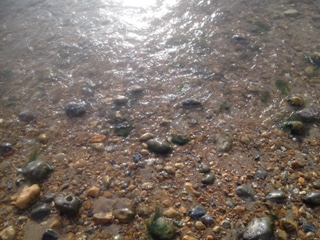
And perhaps this is the greatest gift that the coast can give. It’s very magnitude and power leave us gasping in awe. If we still our thoughts and concentrate on what is before us, we grasp, briefly, a sense of communion with the universe. It is both humbling and uplifting.
Though writing about a rural landscape, I think that Wordsworth’s words fit equally well in describing the effect of the sea upon the viewer.
Of aspect more sublime; that blessed mood,
In which the burden of the mystery
In which the heavy and weary weight
Of all this unintelligible world,
Is lightened (37-41).
From :’Lines Composed a Few Miles above Tintern Abbey’:
If only for a moment, ‘the heavy and weary weight’ is lifted and such a release is sometimes all we need to bring us back into balance.
We are blessed to live on an island where the coast is never more than 70 miles away. Our coastline is, with few exceptions, all public and accessible. A short trip is all we need to make to refresh our bodies and our minds. And this weekend? I think you know where I’m heading.

